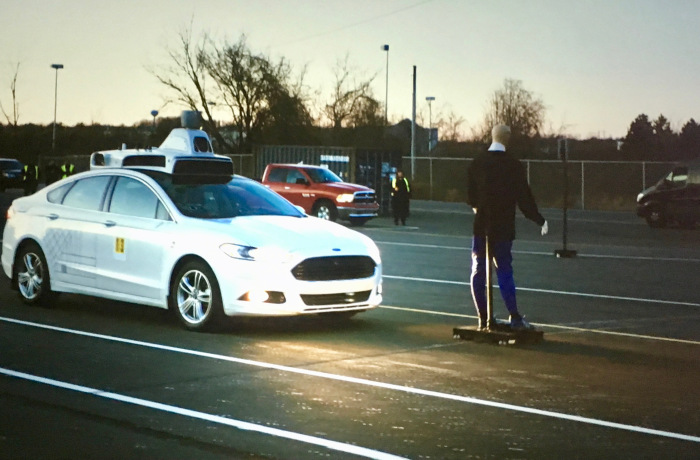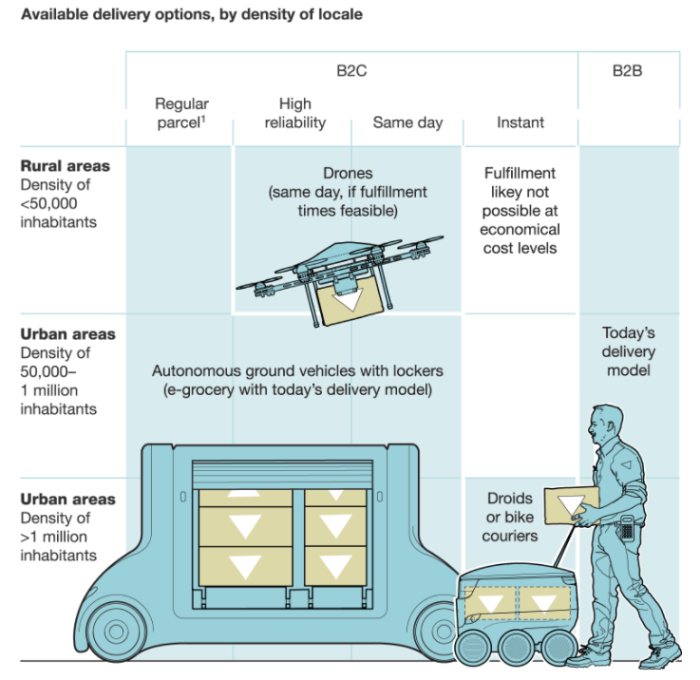Lior Ron has had quite a ride since founding Otto less than a year ago; within three months of his official launch, Uber acquired the autonomous truck startup for more than $680 million. Ron, a former Google executive, told me this week that he started Otto as a socially conscious company to end roadside fatalities. Since trucks are the cause of the most catastrophic accidents, it was a natural progression to begin with converting big rigs. A big technological advantage of highway driving is that there are no pedestrians, bikes, and other obstacles that caused an Uber’s self-driving taxi accident this week. By traveling from exit to exit, Otto became the first company to make an autonomous delivery of 50,000 cans of Budweiser last October.
Since then, there are a handful of other upstarts targeting the eighteen-wheeler market. Last month, Embark became the latest to publicly reveal a self-driving rig with the announcement of their Nevada beta test. At their core, Embark, Otto and others are deep-learning companies that utilize sensor-based data (cameras, radar, GPS, LIDAR, and other inputs) and neural networks to enable vehicles to learn the same way teenagers do – practice.
According to CEO, Alex Rodrigues, “Analyzing terabyte upon terabyte of real-world data, Embark’s DNNs (Deep Neural Nets) have learned how to see through glare, fog and darkness on their own. We’ve programmed them with a set of rules to help safely navigate most situations, how to safely learn from the unexpected, and how to apply that experience to new situations going forward.”
Another benefit of tracker-trailers is the ability to platoon multiple ones together in a wagon train. Last year, the US Army utilized this approach to lead four rigs through seven miles of Michigan highway traffic. The trucks were driven semi-autonomously by utilizing vehicle-to vehicle (V2V) communications between the lead human driver and the four self-driving drones. The Federal Government plans to open up 5.9 Ghz for V2V communications in the near future. To accomplish this successful test, the US Army’s Tank Automotive Research, Development & Engineering Center is working with Peloton with the expressed goal of ferrying goods through war zones.
In 10 to 15 years, Army engineers say fully autonomous truck convoys will be ready to serve in conflict zones. The reasoning is obvious: “we do want to get soldiers out of the convoy vehicles, in case they could be on roads with IEDs,” says Alex Kade, who helps direct the Army center’s research in ground vehicle robotics. Since 2002 in Iraq and Afghanistan thousands of military and civilian personal have been killed in transport runs.
Long-haul truck driving is only one aspect of the logistics pipeline, last mile delivery costs retailers and shippers annually over $70 billion. Currently, every logistics supplier from Amazon Prime to UPS are investigating ways to reduce costs and increase margin in the world of free shipping. UPS became the first company in the US to fly a delivery drone autonomously from truck to customer last month. While the milestone flight was a technological achievement, it did raise questions whether aerial drones are the most efficient means of delivery as it took considerably longer than a human driver.
A lot has been written already on unmanned aerial vehicle delivery, however the biggest land grab could be terrestrial robots. Already there are a handful of companies focused on ground-based droids for last mile deliveries, including: Starship Technologies, Dispatch, Marble, and Robby. Starship has been aggressively testing small rovers throughout urban centers across the USA and Europe. Most recently, Domino’s announced it is partnering with Starship to begin delivering pizza in Hamburg, Germany, within the next two months.
“Robotic delivery units will complement our existing delivery methods, including cars, scooters and e-bikes. With our growth plans over the next five to 10 years, we simply won’t have enough delivery drivers if we do not look to add to our fleet through initiatives such as this,” said Don Meij, Domino’s Group CEO
However, it is still unknown if consumers will prefer to leave their doors and walk to the curb to pick up a pizza, especially if it is raining. This proposition would mean a downgrade of the current level of service. A backlash could mean that customers would seek out full-service delivery options, leaving brands that opt for curbside drones behind.
Hurdler Motors of Boston is building a true door-to-door delivery solution using an innovative stair climbing design. According to CEO, Michael Goren, “we’re working on last-mile delivery vehicles and single-passenger autonomous indoor/outdoor robotic vehicles. We’re looking at eliminating the accessibility problems of the central city and human-scale assistance.” Hurdler has yet to release publicly its concept design.
The infamous developer of robotic mules is Boston Dynamics (BD) which has successfully shown its ability to create humanoid and animal-like robots that navigate the world as easily, and possibly better than humans. BD’s speciality is creating “dynamically balancing legged machines” that have been deployed in the harshest conditions from combat zones to extreme weather without falling or losing its payload. Last year BD’s CEO Marc Raibert displayed how their latest four-legged robot, Spot Mini, was able to carry packages up to the front door of different homes around Boston. Raibert then asked the group, “many people are talking about drone delivery. So why not just plain legged robots?” BD is owned by Google, and maybe this was hint of the future of Google Express.
Last March, Raibert unveiled his latest super robot – a humanoid on wheels. Judging by its dexterity and strength there is nothing that is out of scope for BD’s latest invention. According to Raibert, the wheeled robot is for research and development purposes however, the video hints at a future whereby it could be used in a warehouse, or better yet, to deliver pizza.





